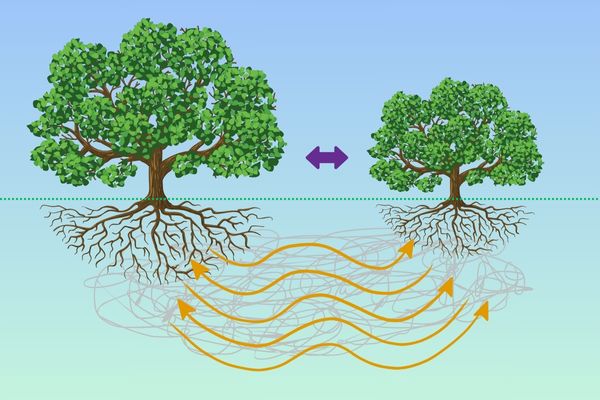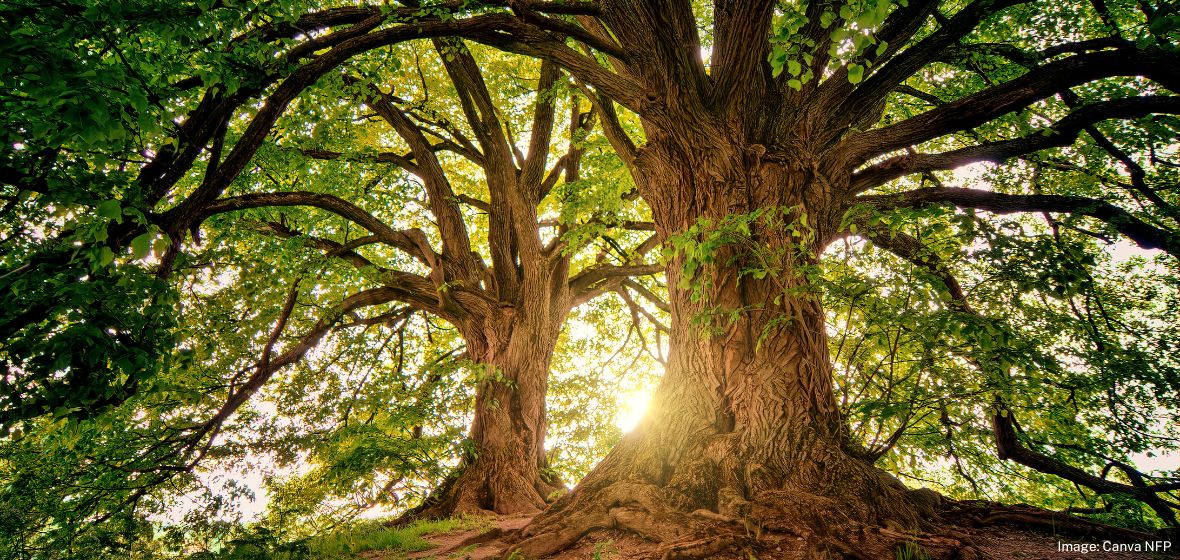21 March 2024
21 March is the International Day of Forests, a day to raise awareness and appreciation of the vital role that forests play in sustaining life on Earth. But did you know that forests are not just collections of passive plants but complex and dynamic communities of living beings that communicate, cooperate and care for each other?
In recent years, scientists have discovered that trees have a hidden life that is much more fascinating than we ever imagined. Trees can sense their environment, respond to threats, share resources and information, and even recognize their relatives. They do this through various means, such as releasing chemical signals into the air and forming underground fungal networks that connect their roots.
Trees communicate through fungal networks
Trees communicate through an underground network of fungi known as mycorrhizal networks. These intricate systems consist of tiny threads called mycelium that intertwine with tree roots. Mycorrhizal networks serve as an information highway, allowing trees to share resources and vital information.

[Fig 1.] Trees communicate via underground mycorrhizal networks.
These fungal connections can transmit nutrients, water, and defence signals between trees. This cooperative behaviour challenges the traditional view of nature as a constant competition for survival. The communication network has been aptly dubbed the “wood-wide web,” emphasising the interconnectedness of forest ecosystems.
Chemical signals warn neighbouring trees
When a tree faces danger from an invasive predator or disease, it can release chemical signals through the mycorrhizal network or into the air. Surrounding trees pick up these cues and respond by releasing hormones or chemicals to deter threats.
For example, when a giraffe begins munching on acacia leaves, the tree detects the injury and emits a distress signal in the form of ethylene gas. Neighbouring acacias respond by pumping tannins into their leaves as a defence mechanism. As high tannins negatively impact the taste and nutritional value of the plant, giraffes actively avoid those plants.
Matriarchal trees hold the forest together
Mother trees are the biggest, oldest trees in the forest. These matriarchal trees are at the heart of this communication system, nurturing and sustaining the surrounding flora and fauna. These ancient guardians facilitate the transfer of nutrients and information through their expansive root systems, enabling younger trees to thrive and warning neighbouring plants of impending threats like pests or disease.
Furthermore, research suggests that forests with more matriarchal trees exhibit greater biodiversity and resilience to environmental stressors. These ancient sentinels not only support a rich plant and animal life but also play a crucial role in mitigating climate change. Their longevity and resilience help maintain the delicate balance of ecosystems.
Removing a matriarchal tree from a forest has detrimental consequences for the surrounding trees. When felled, the tree’s established root system vanishes, disrupting nutrient sharing and communication. Neighbouring trees suffer as they lose access to vital resources and protective signals. This disturbs the intricate balance within the forest ecosystem, impacting regeneration and overall resilience.
Protecting the delicate balance of Queensland forests
Queensland has the largest area of native forest in Australia. It hosts some of the most diverse and unique ecosystems, such as the rainforests of the Wet Tropics World Heritage Area. These forests are home to thousands of species of plants and animals, many of which are endemic and endangered. They also provide essential services for human well-being, such as regulating climate, water and air quality, and supporting tourism and recreation.
However, these forests are constantly threatened by various factors, such as logging, clearing, fire, climate change, and invasive species. These threats disrupt the delicate balance of the forest, reducing its resilience.
“Preserving and sustainably managing Queensland’s forests is essential,” emphasises Wildlife Queensland Projects Manager Matt Cecil.
“Old-growth trees, in particular, play a vital role by providing hollows—homes for our wildlife, such as the endangered greater glider.”
The International Day of Forests is an opportunity to celebrate the beauty and diversity of forests and acknowledge their importance for our planet and our future. It is also a chance to foster a deeper connection and appreciation for these remarkable beings.
What you can do:
- Contact your local MP to voice your concerns about the rate of deforestation in Queensland.
- Subscribe to our Talking Wildlife e-Bulletin for the latest Wildlife Queensland news, events and offers.
For more information on the secret life of trees:
- Simard, S. (2021). Finding the mother tree: discovering the wisdom of the forest. First edition. New York, Alfred A. Knopf.
- Wohlleben, P., & Grady, M. (2016). The hidden life of trees: What they feel, how they communicate. Unabridged. Glasgow, William Collins.

